A boring garden can feel uninspiring, but with a few creative changes, you can transform it into a vibrant, dynamic space. Whether you’re working with limited space or want to add a touch of flair, there are plenty of easy, budget-friendly ways to spice up your outdoor area.
In this article, we present 22 ideas to spice up a boring garden. From adding unique garden art to incorporating vibrant plants and clever designs, these ideas will help you create a garden that’s full of personality and charm. If you’re ready to breathe new life into your outdoor space, these inspiring tips will do just the trick!
Vertical Planting
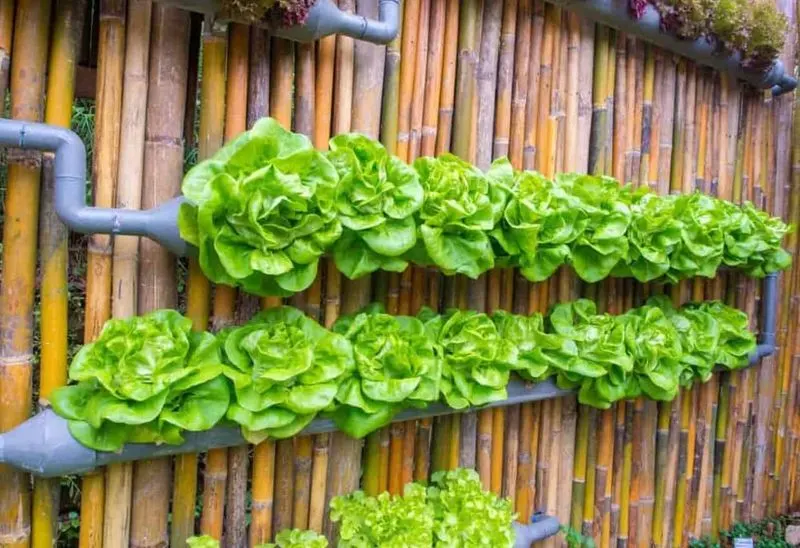
Vertical gardens make the most of limited spaces and add a striking visual element. By planting upwards, the space becomes dynamic and lush. Opt for a variety of plants for diverse textures and colors. Consider incorporating herbs or small vegetables for functionality. Vertical structures, like trellises or wall planters, also work well in small urban settings, transforming a mundane wall into a living piece of art. Additionally, these installations are ideal for gardeners looking to experiment with different species without needing extra ground space.
Water Features
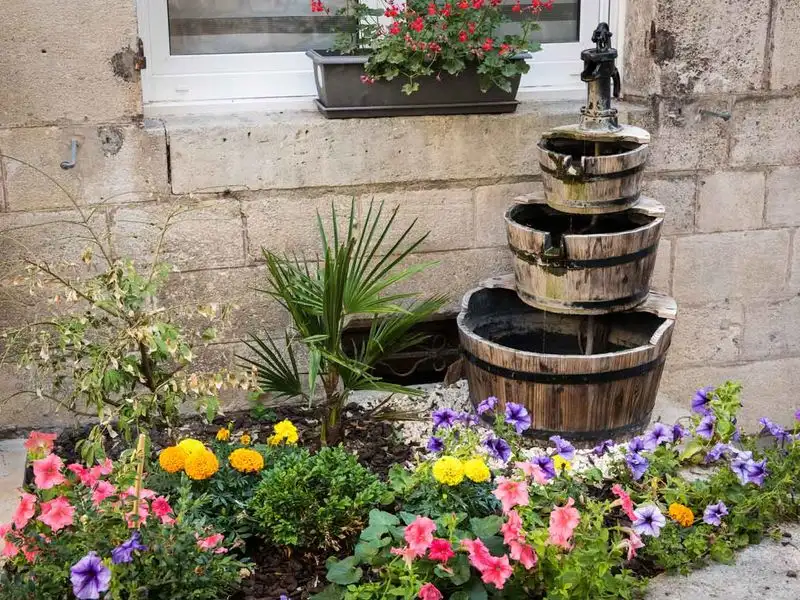
Incorporating a water feature creates a tranquil atmosphere and invites wildlife. Ponds, fountains, or even small waterfalls can add movement and sound, enhancing the sensory experience. When considering a pond, ensure it fits your garden’s scale and style to maintain harmony. Water features can also become focal points, drawing attention and making the garden feel more alive. Besides aesthetic appeal, they offer environmental benefits, providing habitats for various creatures, adding biodiversity to your garden.
Garden Illumination
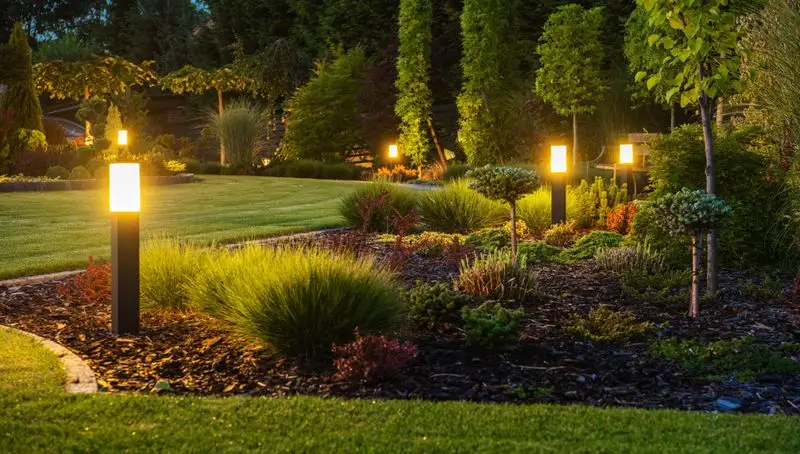
Lighting enhances a garden’s appeal and usability after sunset. Solar-powered lanterns add an eco-friendly touch, with fairy lights woven through trees or shrubs offering a whimsical effect. Pathway lights guide visitors safely while highlighting garden features. Use uplighting for dramatic effects on larger plants or architectural elements. Adequate illumination transforms gardens into enchanting spaces, perfect for evening gatherings. Opt for energy-efficient options that contribute to sustainability while ensuring your garden remains a visual delight, day or night.
Themed Zones
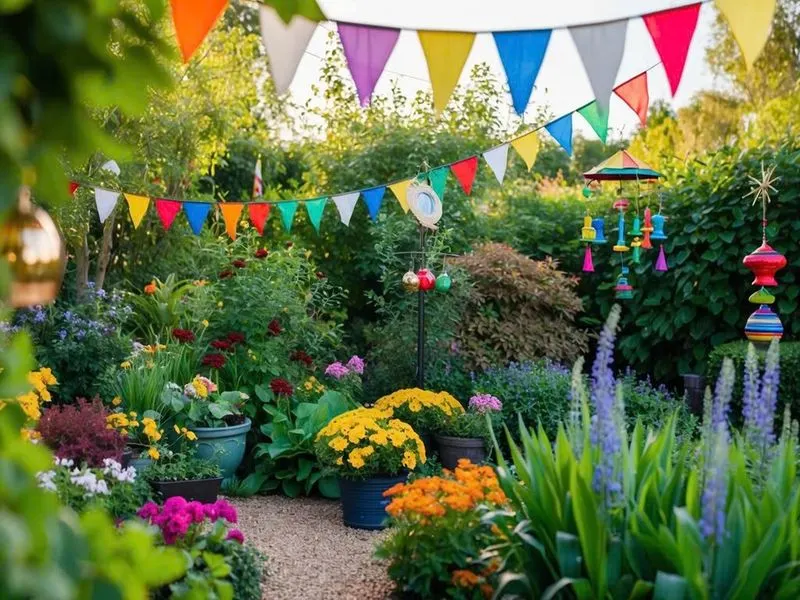
Creating themed zones adds variety and interest. A Zen garden provides a peaceful retreat, while a vibrant flower patch brings color and life. Vegetable plots offer practical benefits, supplying fresh produce. Themed zones help organize space, making it manageable and appealing, especially in larger gardens. They also reflect personal tastes and hobbies, allowing gardeners to explore different styles within a single space. Each zone can be tailored to different moods or seasons, ensuring the garden remains dynamic and engaging throughout the year.
Wildlife Habitat
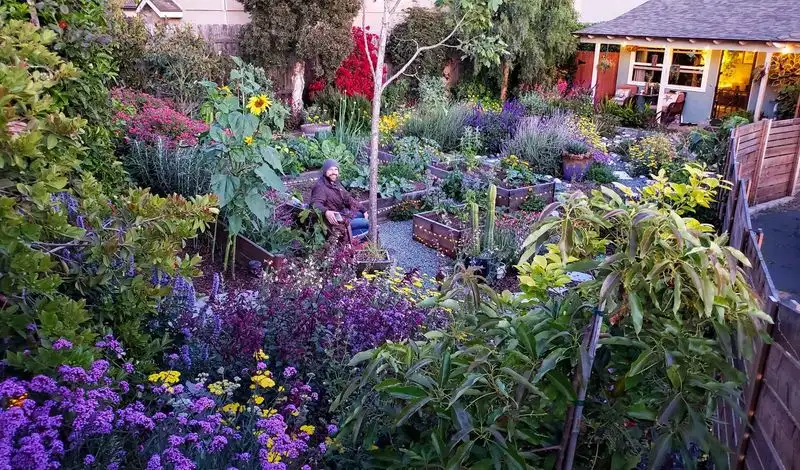
Designing a garden to support wildlife enriches the ecosystem and brings natural beauty. Birdhouses, bee hotels, and native plants attract beneficial insects and birds. Wildflower meadows offer food and shelter, supporting biodiversity. These habitats can be educational, teaching observers about local species. Additionally, wildlife-friendly gardens require less maintenance, as they thrive on natural processes. The presence of birds and bees pollinates plants, leading to a healthier garden. Embrace the wild side by dedicating a portion of your garden to nature.
Whimsical Pathways
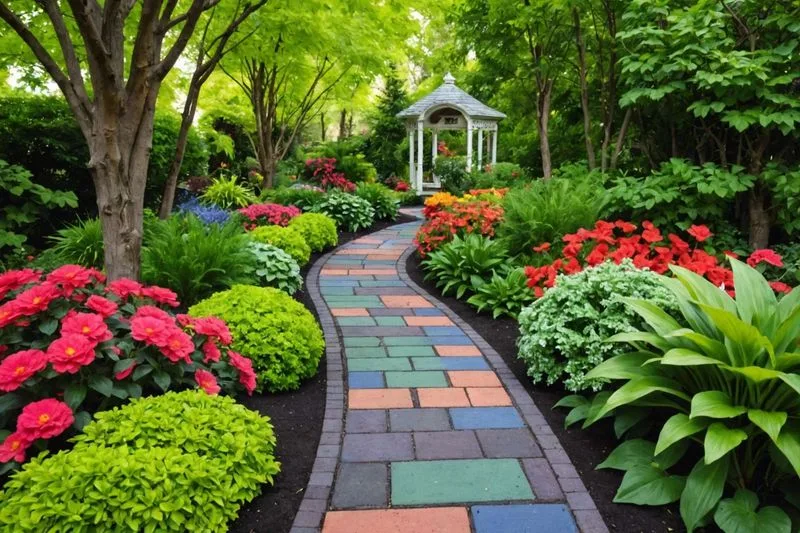
Paths guide visitors through a garden, creating a journey rather than a destination. Brick, stone, or gravel paths can be both functional and decorative. Consider curves and meanders to add intrigue and allow exploration. Incorporate ornaments or plants along the edges for added charm. Whimsical pathways invite guests to wander and discover different sections, each offering new perspectives. They also help delineate areas, making the garden feel more expansive. This approach encourages mindful walking and a deeper connection to the garden’s environment.
Sculptural Elements
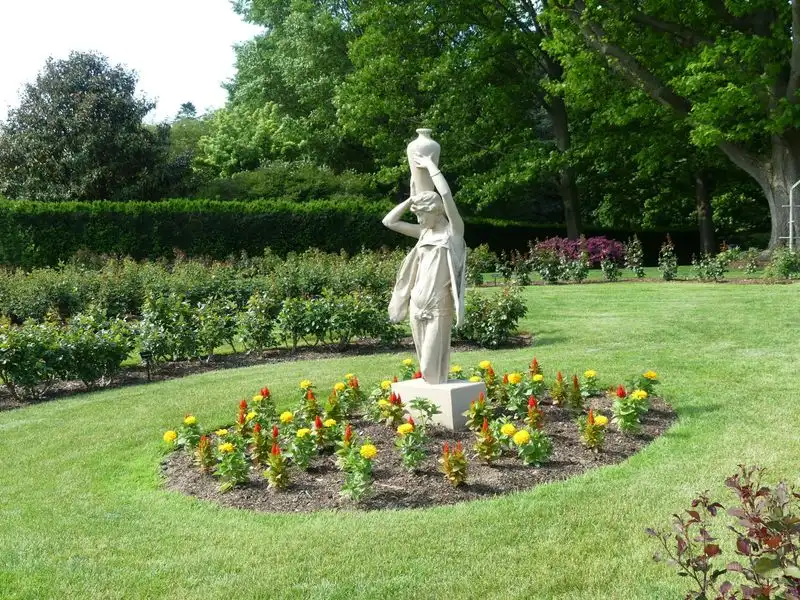
Art pieces can become focal points, adding personality and style. Sculptures, whether modern or classical, contribute unique character. Materials like metal, stone, or wood work well, depending on the garden’s theme. Position these elements to complement plantings and views, creating a harmonious landscape. Sculptural elements also foster conversation and reflection, drawing attention and encouraging interaction. Besides aesthetics, they can symbolize personal values or memories, enriching the garden’s narrative and making it a truly personal space.
Outdoor Seating Nooks
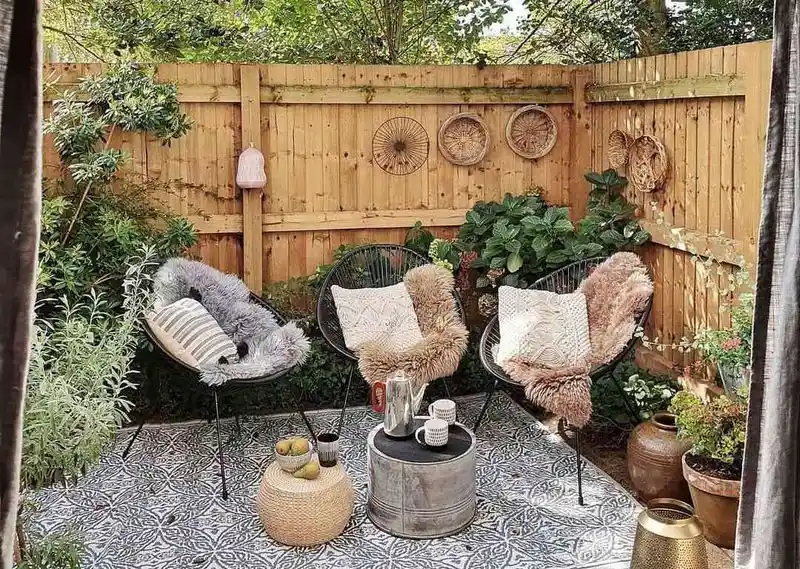
Creating spaces to relax enhances garden enjoyment. Nooks offer intimate spots for reading or contemplating. Choose comfortable seating, like cushioned benches or hammocks, to invite lingering. Pergolas or arbours draped with vines provide shade and privacy. These areas can be adorned with potted plants or lanterns, enhancing ambiance. Outdoor seating encourages spending more time in the garden, appreciating its beauty and tranquility. Whether alone or with company, these inviting nooks become cherished retreats for unwinding and connecting with nature.
Edible Landscaping
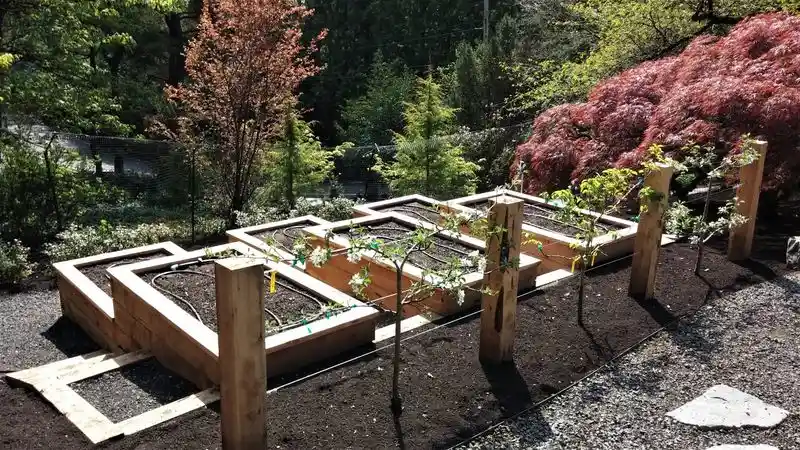
Combining beauty and bounty, edible landscaping offers both visual appeal and fresh produce. Incorporate fruit trees or berry bushes alongside ornamental plants. Vegetables like kale or lettuce can be woven into flower beds for added texture and color. This practice promotes sustainability and reduces food miles. Edible plants provide seasonal interest, with changes in foliage, flowers, and fruit. Gardens benefit from diverse, interplanted species, improving soil health and resilience. Enjoy the rewards of growing your own food while maintaining an attractive garden space.
Colorful Containers
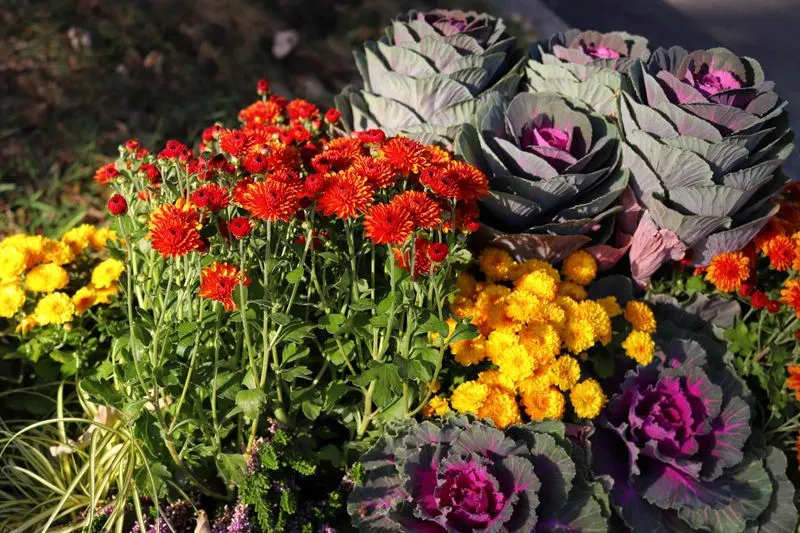
Containers offer flexibility and creativity, perfect for any garden size. Choose pots in varying sizes and colors to create visual interest. Plant a mix of flowers, herbs, or succulents to suit your style and needs. Containers can be moved or rearranged, adapting to seasonal changes or events. They allow control over soil quality and drainage, ideal for plants with specific needs. Additionally, containers add layers and height, breaking up monotony in flat areas. This approach is perfect for renters or those wanting to experiment with garden design.
Seasonal Displays
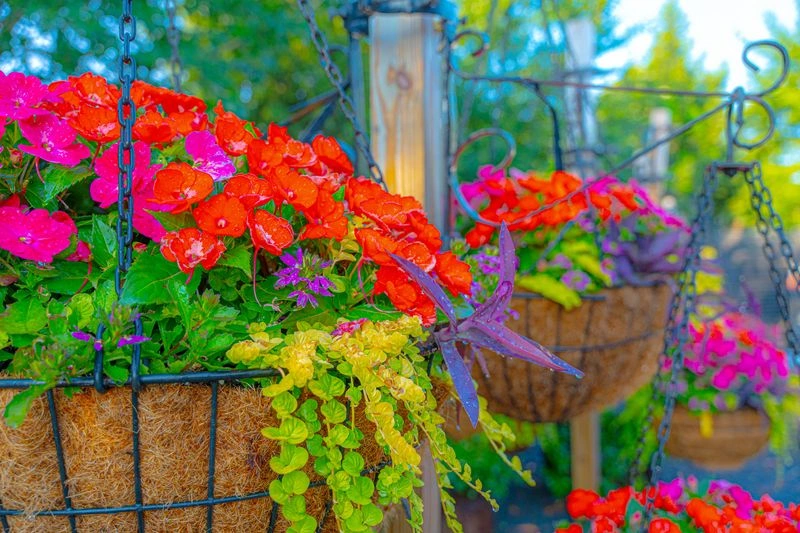
Seasonal displays keep gardens vibrant year-round. Plan for spring bulbs, summer blooms, and autumn foliage. Include evergreens for winter interest. This ensures continuous color and texture changes, captivating visitors. Seasonal plantings reflect the changing environment, connecting the garden to its natural cycle. Displays can be tailored to specific holidays or events, adding another layer of interest. Planning and rotating seasonal features require some effort but offer high rewards, keeping the garden fresh and exciting, regardless of the time of year.
Herb Spiral
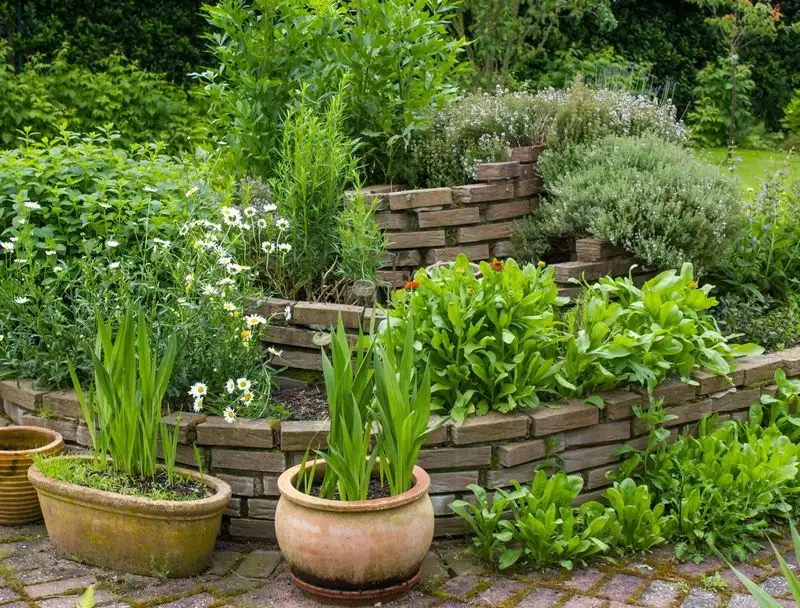
A space-efficient herb spiral maximizes growing area and microclimates. By spiraling upwards, plants receive varying sunlight and moisture levels. This design supports diverse herbs in a small footprint. Stones retain heat, aiding growth, while the spiral shape adds visual intrigue. Herb spirals suit any garden, providing fresh flavors for culinary use. They simplify harvesting and maintenance, keeping everything within reach. This innovative approach blends practicality with creativity, perfect for those wanting to enhance their garden’s function and appeal.
Living Walls
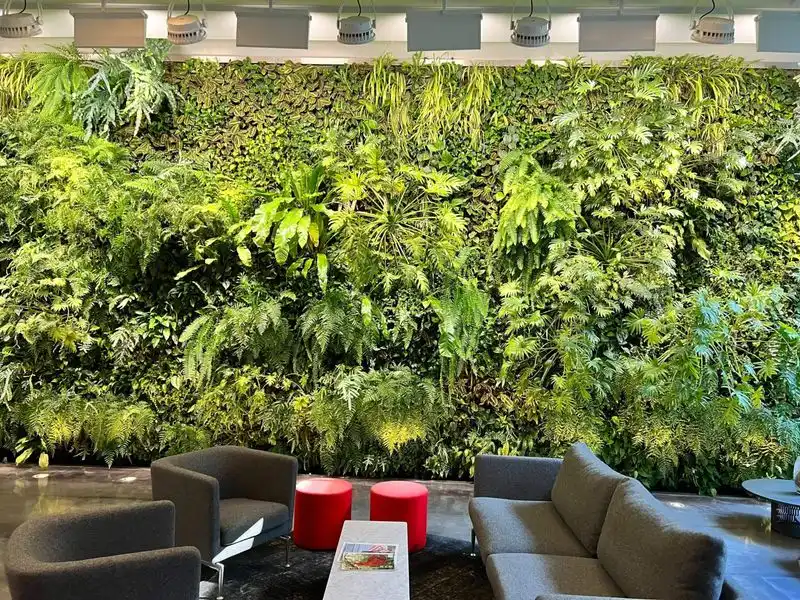
Living walls, or green walls, introduce greenery to vertical surfaces, offering striking visual impact. These installations save space while improving air quality. Suitable for indoor or outdoor settings, they bring nature into unexpected places. Choose plants based on light and moisture needs, ensuring a healthy wall. Living walls soften hard surfaces and foster a calming atmosphere. They’re ideal for urban gardens or courtyards, providing privacy and beauty. This approach merges art and horticulture, transforming mundane walls into vibrant habitats.
Artistic Topiaries
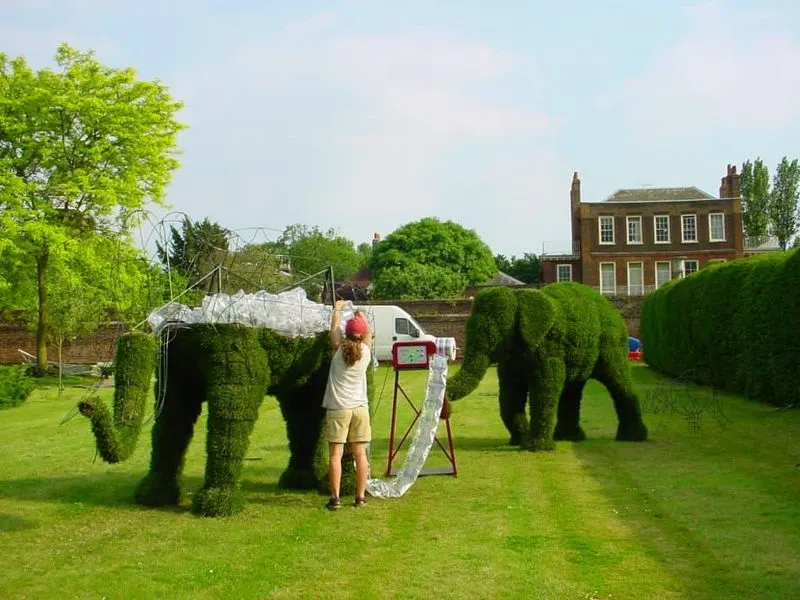
Topiaries sculpt plants into decorative shapes, adding a whimsical touch. From spirals to animals, these living sculptures captivate and entertain. They require regular maintenance for precision but offer high rewards in visual delight. Choose evergreen species for year-round structure and color. Topiaries can anchor garden corners or frame entrances, guiding guests through the space. They reflect artistic expression, merging gardening with sculpture. Perfect for those with patience and creativity, topiaries elevate garden sophistication and charm.
Playful Garden Art
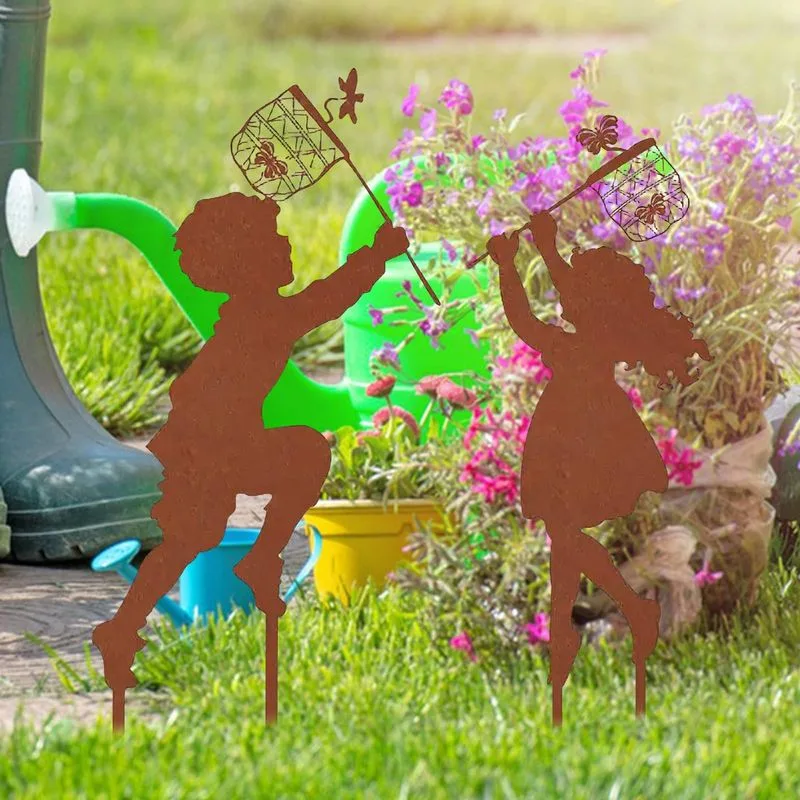
Garden art can infuse humor and personality. Sculptures of animals, abstract forms, or playful installations surprise and delight visitors. These elements become focal points, drawing eyes and creating conversation. Whether whimsical or serious, garden art personalizes and enriches the environment. Choose pieces that reflect your taste, ensuring harmony with the overall garden style. Art installations can evolve with the garden, offering new perspectives and enjoyment. They invite exploration and deepen the connection between visitors and the garden.
Upcycled Garden Features
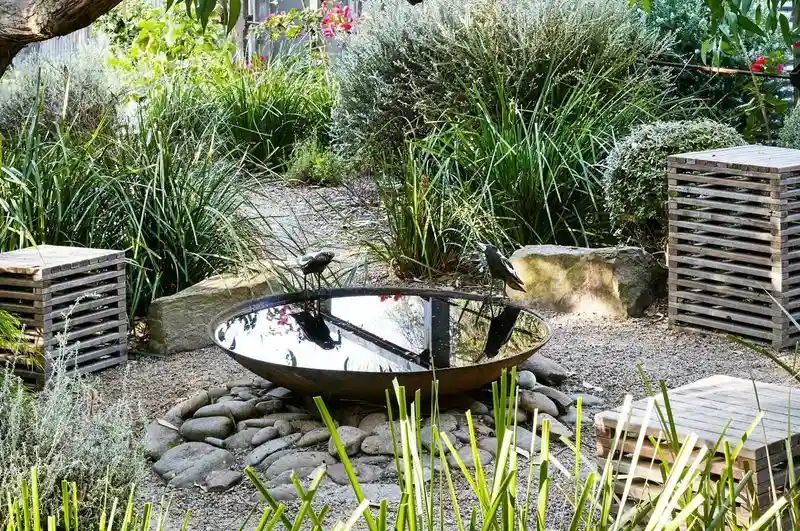
Upcycling transforms discarded items into creative garden features. Old tires, pallets, or containers find new life as planters or furniture. This approach is eco-friendly, reducing waste and costs. Upcycled features add unique character, showcasing innovation and sustainability. They encourage resourcefulness, offering a platform for personal expression. Customizable to any garden size or style, upcycled elements can be functional or purely decorative. This trend supports a sustainable lifestyle, promoting creativity and environmental awareness. Perfect for those looking to make a statement while caring for the planet.
Outdoor Art Gallery
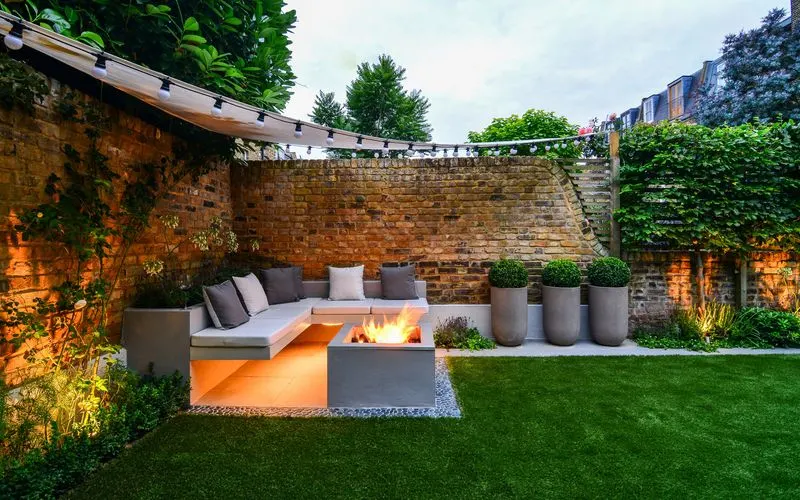
Turn your garden into an art gallery showcasing local artists or personal collections. Paintings, sculptures, or installations find unique settings among plants and paths. This approach enriches the garden’s cultural dimension, offering visual and intellectual stimulation. Outdoor galleries invite guests to ponder art in a natural setting, blending creativity with environment. Rotating exhibits keep the experience fresh and dynamic. This concept encourages art appreciation and community engagement, transforming gardens into spaces of reflection and inspiration.
Pet-Friendly Spaces
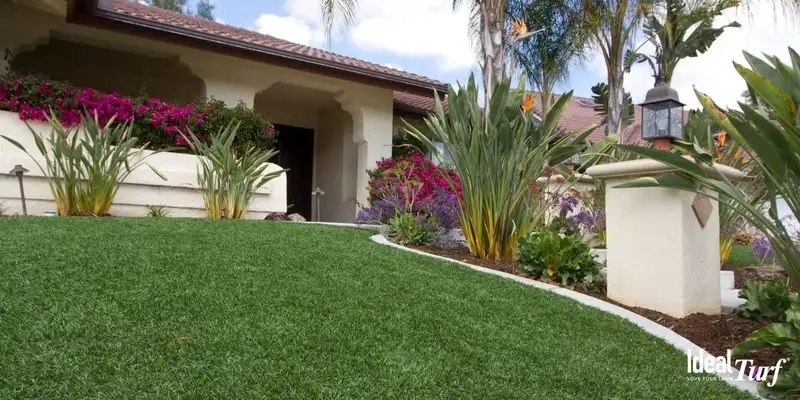
Designing pet-friendly areas ensures safety and enjoyment for furry companions. Include open spaces for play, shaded nooks for rest, and obstacles for exercise. Choose non-toxic plants to prevent harm, and secure fencing to keep pets safe. Such spaces enrich their lives while maintaining garden aesthetics. Pet-friendly gardens promote bonding and outdoor activities, benefiting both pets and owners. They offer a balance between function and design, accommodating all family members. These spaces transform gardens into inviting, inclusive environments for everyone.
Fairy Gardens
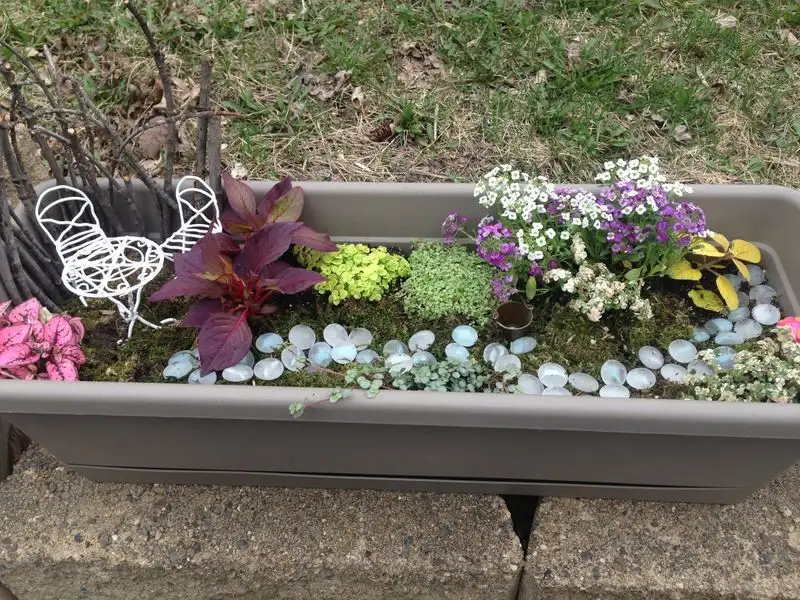
Fairy gardens create enchanted landscapes in miniature. Featuring tiny houses, figurines, and furniture, they charm both children and adults. These gardens invite imagination and storytelling, providing a whimsical escape. Suitable for containers or ground plots, fairy gardens fit any space. Incorporate small plants like mosses or succulents for realism and ease of care. They encourage creativity and can be seasonal, evolving with new themes or characters. Fairy gardens offer a playful, magical addition, making gardens more engaging for all ages.
Sustainable Practices
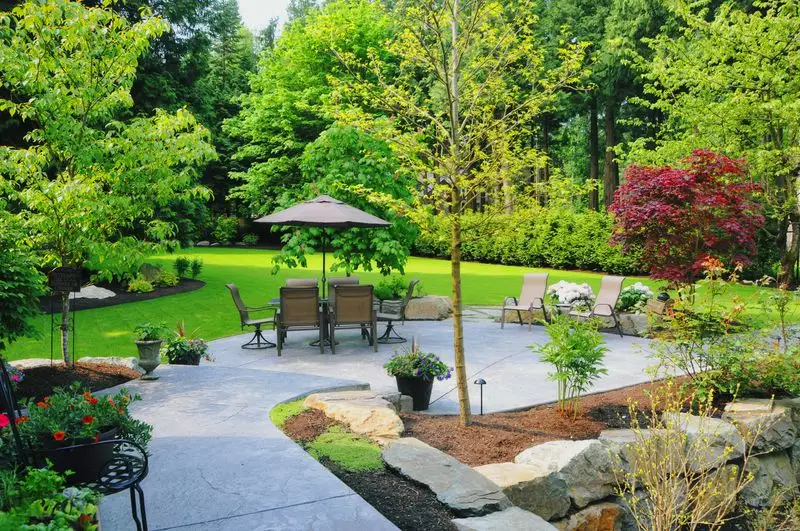
Implementing sustainable practices benefits the environment and reduces garden maintenance. Composting enriches soil, while rainwater collection conserves resources. Native plants thrive with less care, supporting local wildlife and biodiversity. Sustainable gardens minimize chemical use, promoting healthier plants and ecosystems. These practices save money and time, offering long-term rewards. Gardens become resilient and self-sustaining, adapting better to climate changes. Adopting sustainable methods reflects commitment to environmental stewardship, ensuring gardens remain beautiful and beneficial for future generations.
Interactive Features
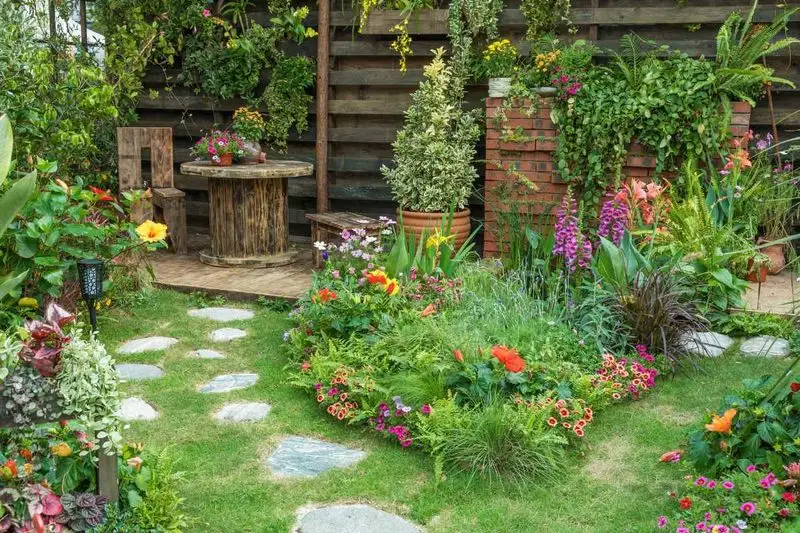
Interactive elements invite engagement and play. Consider a chessboard with oversized pieces or a musical installation using wind chimes. These features offer tactile experiences, appealing to all ages. Interaction deepens connection with the garden, encouraging exploration and learning. They can serve educational purposes, teaching about nature or strategy. Interactive features adapt to various themes, making them versatile additions. They enrich the garden’s atmosphere, offering fun and insight. Gardens become places of joy and discovery, engaging visitors beyond visual appeal.
Fragrant Plants

Scented plants add an olfactory dimension, enhancing sensory experience. Choose varieties like lavender, jasmine, or roses for sweet aromas. Plant near seating areas or pathways, ensuring visitors enjoy the fragrances. Fragrant plants can evoke memories and emotions, deepening garden enjoyment. They attract pollinators, improving garden health and biodiversity. These plants offer seasonal interest, with blooms and scents changing throughout the year. Incorporating fragrant species transforms gardens into immersive experiences, inviting relaxation and appreciation of nature’s subtleties.

